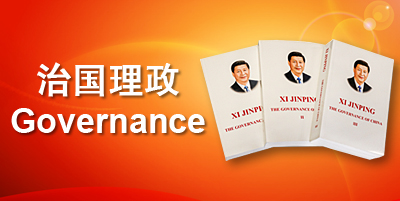
China's population has been in decline. In 2022, the country recorded the first drop in its population in about six decades. At the end of 2023, China's population was 1.40967 billion, a decrease of 2.08 million over 2022, according to data from the National Bureau of Statistics (NBS).
Although China has adjusted its family planning policy to encourage couples to have three children, the downward trend has yet to be reversed. In previous decades, China's society and economy have benefited from a demographic dividend, whereby the declining birth rate has increased the ratio of working-age people to their dependents. However, as these working-age people reach retirement age, the continued low birth rate is seeing proportionally fewer young people replacing them in the workforce, decreasing the proportion of working-age people within the population and decreasing the demographic dividend to China's growth.
This demographic dividend has been an important factor contributing to China's economic rise. To a large extent, it has been the abundance of labor that has promoted China's economic prosperity. However, this does not necessarily mean that the current decrease in births is certain to inhibit economic growth. While China's total population is shrinking, it is still very large. More importantly, as it enters a stage of high-quality development, the increasing proportion of highly skilled workers within the total population is allowing China to transition from relying on a demographic dividend based on the size of the workforce to relying on a more productiv workforce.
NBS data show that only 0.6 percent of China's population had received a junior college education or above in 1982. By last year, that proportion had risen to 17.7 percent. Currently, China has 250 million people with a college education, a scale unseen in the rest of the world. The average years of education for the workforce aged from 16 to 59 stand at 11.05, or the senior-high-school (10th to 12th grades) level. The increasingly educated and skilled workforce is conducive to China's transition from labor-intensive industries to technology-intensive emerging industries, thus bolstering its sustainable economic development.
Given its current workforce of 800 million, China's human resources will remain abundant for many years to come. This means it will continue to benefit from a demographic dividend, particularly in light of growing workforce competence.
In addition to implementing new policies to encourage childbirth, the Chinese Government is also increasing inputs into education, healthcare, technology and other areas to improve the overall competence of the workforce. China is accelerating the establishment of a more balanced and higher-quality basic public education system and upgrading higher education as well as its vocational education system in a bid to make its workforce better educated. In Canada, Japan and the United States, the proportion of the population with college education or higher in 2021 reached 51 percent, 45 percent and 42 percent, respectively. This gap indicates a tremendous capacity exists for China to further enhance its per-capita productivity.
Local governments have also implemented policies to attract highly qualified professionals. For example, in 2021, Guizhou, an economically less developed province in southwest China, formulated a plan for human resource development as part of its 14th Five-Year Plan (2021-25). The plan introduced policies that optimize the business environment and incentivize entrepreneurship among scientific and technological professionals. Additionally, a special talent fund has been set up, earmarking 1 billion yuan ($138.9 million) every year to attract and train high-end personnel.
Copyedited by G.P. Wilson
Comments to lanxinzhen@cicgamericas.com















